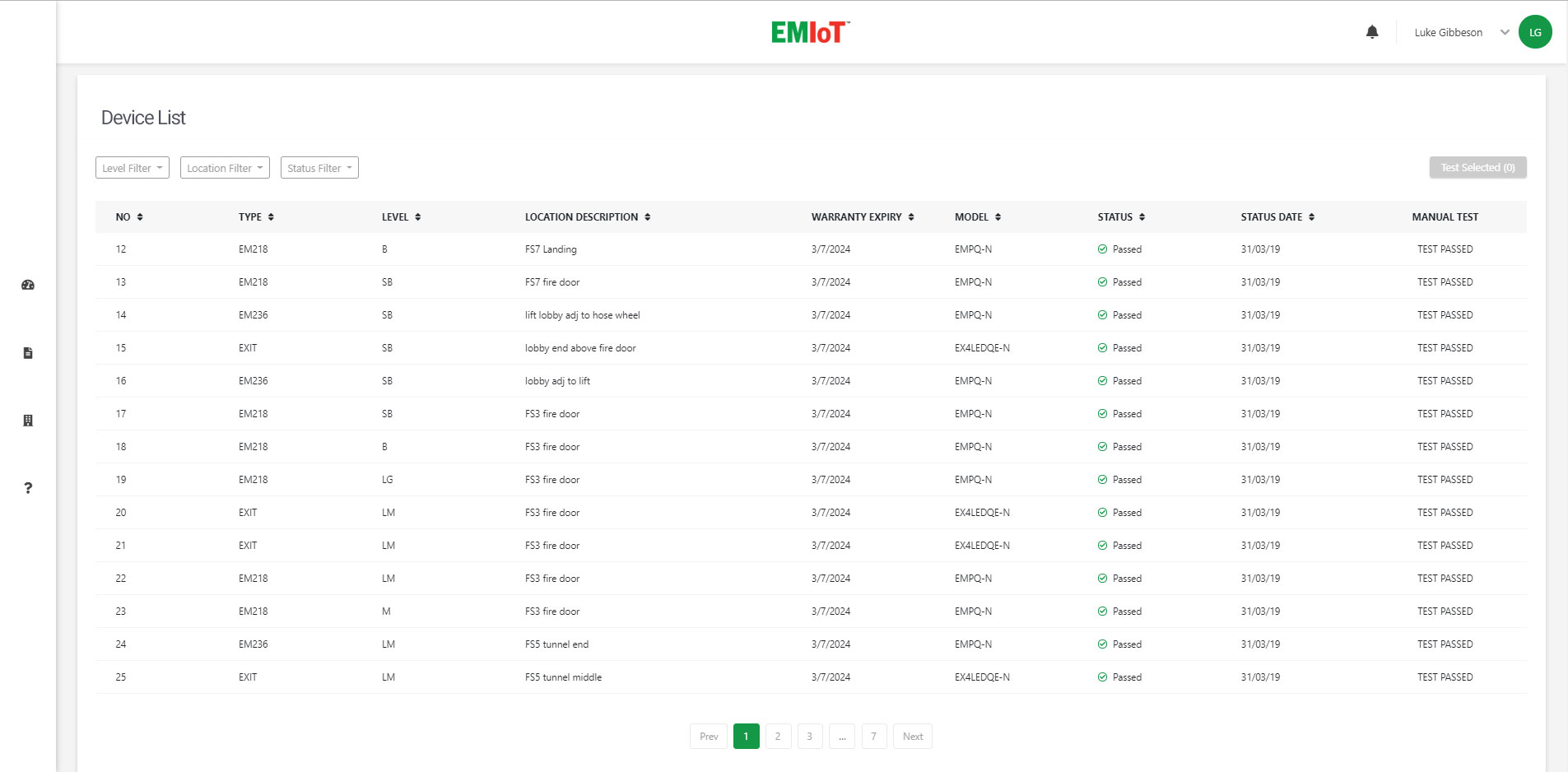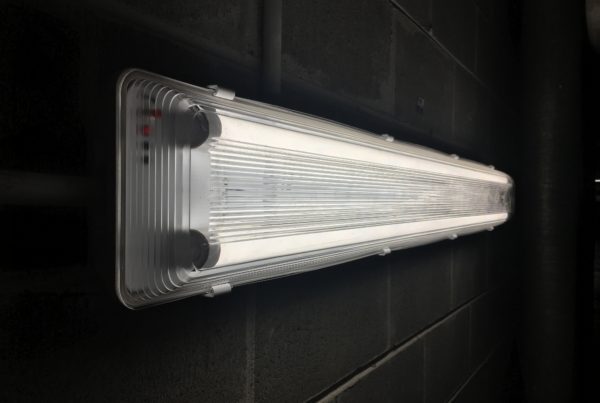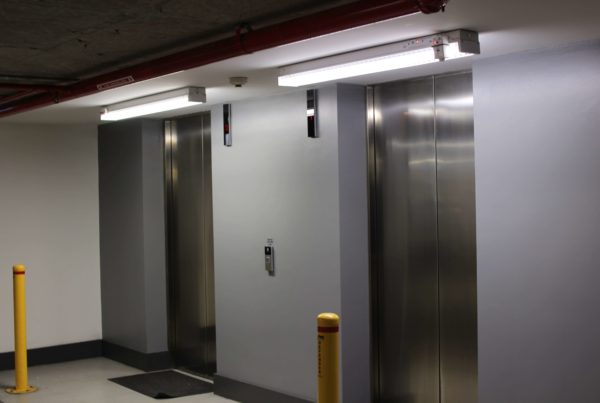Exit and emergency lighting provides safe passage from buildings in an emergency situation when standard lighting fails. Exit and / or emergency Lighting is required to be installed in all Class 1b, 2, 3, 4, 5, 6, 7, 8 and 9 Buildings as defined in the National Construction Code, and additionally where required by the Victorian Building Authority.
All exit and emergency lighting is required to meet the Australian standards set out in AS/NZS 2293 Parts 1, 2 and 3. These standards outline the design, installation, maintenance and product requirements of emergency lighting systems required in all commercial premises. To ensure safety of any person who enters the building, emergency lighting must be continually tested, maintained and compliant as set out in AS/NZS 2293 standard. Each fitting must be clearly labelled with a consistent and logical numbering convention, that identifies it uniquely in the building.
In Victoria (as in other states), all exit and emergency lighting installations require testing every six months to ensure that they are in safe working condition. The test needs to be conducted by a trained service provider who is required to test the lights for a duration of not less than 90 minutes. Expert knowledge is required to simulate a power outage for that period, and to then monitor the fittings for any non-compliance or faults that are shown.
What is the logbook?
Every building is required to hold a logbook of each fitting installed, including the fitting number, location, type, date of installation, any faults or failures, and a record of all work carried out. This logbook can take an electronic form, or a physical book with a durable cover that is kept on site in a defined location. While this is important for compliance, it also ensures consistency and efficiency as electrical contractors can easily hand the site over to a new employee to carry out testing and repairs.
On completion of a test, a copy of the results must be given to the property manager or responsible person to be kept with the logbook of work done within one week. If there are any critical defects (those which would render the system inoperable), they must be recorded in the logbook and communicated to the building manager or responsible person within 24 hours.
Every 12 months, a statement must be given that records the condition of all equipment in the building, its operational status, any defects, that the lighting is still to the approved design and compliant, and a summary of maintenance work.
Logbook records must be kept for seven years and can be inspected by a council building inspector or representative of the Fire Authority. If the records are not to a satisfactory level, an infringement notice can be issued, resulting in a fine or prosecution. Failure by contractors to record defects or non-compliance in the building could even result in building occupants being put in danger should there be an emergency situation.
For more information about our EMIoT monitored system with automatic electronic record-keeping, contact WBS Technology or your local wholesaler.





